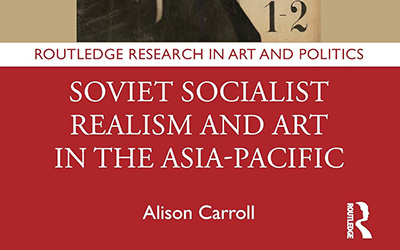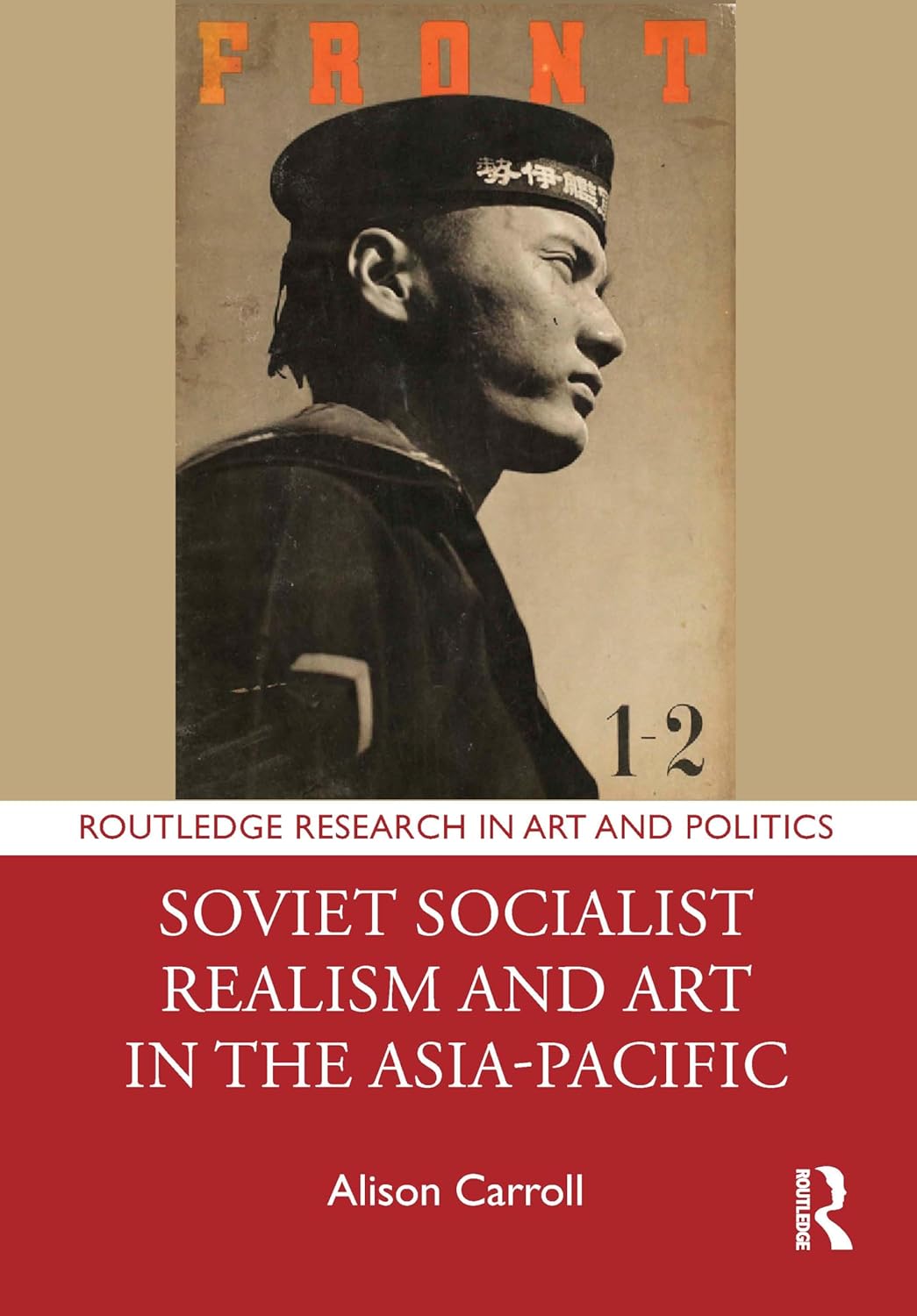
- Free Article: No
- Contents Category: Art
- Review Article: Yes
- Article Title: Red aesthetics
- Article Subtitle: The eastern horizon of Socialist Realism
- Online Only: No
- Custom Highlight Text:
From bountiful feasts on collective farms to choreographed parades in Red Square, Soviet Socialist Realism painted a world of triumphant spectacle. In the eyes of Western critics, however, these images were as bland as they were removed from Soviet reality. As a result, Socialist Realism hovered on the margins of art history almost until the end of the twentieth century, when a series of studies in the early 1990s moved away from the reductive assessment of the movement as vulgar propaganda, revealing a complex and intriguing aesthetic reasoning within its production. A subsequent wave of further research would foreground the influence of this artistic production outside the Soviet Union. With Soviet Socialist Realism and Art in the Asia-Pacific, Alison Carroll aligns with efforts to examine the impact of the movement in a global context, placing focus on a region that certainly merits greater attention.
- Featured Image (400px * 250px):

- Alt Tag (Featured Image): Iva Glisic reviews ‘Soviet Socialist Realism and Art in the Asia-Pacific’ by Alison Carroll
- Book 1 Title: Soviet Socialist Realism and Art in the Asia-Pacific
- Book 1 Biblio: Routledge, $284 hb, 230 pp
- Book 1 Cover Small (400 x 600):

- Book 1 Cover (800 x 1200):

- Book 1 Readings Link: https://www.readings.com.au/product/9781032661308/soviet-socialist-realism-and-art-in-the-asia-pacific--alison-carroll--2024--9781032661308#rac:jokjjzr6ly9m
Opening with a discussion of the ideological basis of Socialist Realism and the organisation of artistic production and education in the Soviet Union, Carroll’s study seeks to highlight the impact of the Soviet creative impulse on the countries in the Asia-Pacific region from 1917 to today. Spanning five chapters and significant part of the world’s geography, the book considers Russia, China, Vietnam, Korea, Indonesia, the Philippines, and Australia, while countries such as Japan, Singapore, Malaysia, and India feature intermittently. In her introduction, Carroll also engages with the historiography of Socialist Realism in the West, asserting that Cold War antagonism prevented Socialist Realist art in the Asia-Pacific from being acknowledged ‘in the accepted versions of global art history’. Seeking to revise this history, Soviet Socialist Realism and Art in the Asia-Pacific is an ambitious project and one that ultimately struggles to deliver a convincing narrative amid a series of different themes and lines of enquiry.
Though Soviet Socialist Realism is intended to anchor the study, the level of engagement with the movement’s history and ideology is superficial. A definition of the phenomenon is offered through a disparate set of statements by Soviet leaders, including the oft-cited proclamations that Socialist Realism was meant to be socialist in content and realist in style. Readers may gain the impression that Vladimir Lenin, Joseph Stalin, and Soviet chief propagandist Andrei Zhdanov formulated a recipe for this new form of Soviet art, which was then patriotically executed by artists. This account runs contrary to a significant body of scholarship – the domain of Katerina Clark, Michael David-Fox, and Pamela Kachurin, among others – which demonstrated the struggles faced by Soviet leaders in defining the principles of this art, and the fact that numerous art groups were active participants in this debate.
Monumental production is a prominent feature of Soviet Socialist Realism and Art in the Asia-Pacific, with the impact of iconic Soviet works such as Vera Mukhina’s Worker and the Kolkhoz Woman (1937) and Aleksandr Gerasimov’s Stalin and Voroshilov in the Kremlin (1938) traced from China to Indonesia. Carroll also highlights the influence of Soviet graphic art in the Asia-Pacific, with a particularly interesting investigation of the dissemination of USSR in Construction. This photo magazine, which celebrated industrialisation and urbanisation, was published in five languages between 1931 and 1941, and provided inspiration for contemporary publications across the region including, Carroll argues, Melbourne’s Proletariat and Sydney’s Communist Review. Absent from this discussion is an acknowledgment of the tension between the avant-garde (which shaped Soviet graphic design) and Socialist Realism (which was intended to replace avant-garde experimentation altogether). Instead, this friction is explained away with the introduction of a curious category – ‘avant-garde Russian Socialist Realists’ – that unproblematically marries their distinct aesthetics.
It is in passages that trace pathways of influence that Soviet Socialist Realism and Art in the Asia-Pacific gains momentum. Soviet writings on art – including publications by Soviet Commissar for Enlightenment Anatoly Lunacharsky, along with those by Maxim Gorky and Georgi Plekhanov – were eagerly translated in China, and made available throughout the Asia-Pacific (at times via an intermediary Asian language rather than directly from Russian). Points of direct contact and knowledge transmission provide valuable insight into a history of Soviet cultural influence that looks beyond the familiar Cold War East-West dichotomy. These include the stories of Chinese artist Jack Chan, who trained in the Higher State Artistic and Technical Workshop in Moscow in 1928 (a stronghold of the Soviet avant-garde), and that of Soviet painter Konstantin Maksimov, who taught artists in Beijing in the mid-1950s.
While these examples of cultural influence are illuminating, Soviet Socialist Realism and Art in the Asia-Pacific ultimately falls short of the author’s stated goal of delivering a coherent and ‘fair assessment’ of Socialist Realism in the Asia-Pacific. This is in part a result of the complexity and scale of the study: predominant focus on the Soviet Union and China significantly compresses the discussion of numerous topics across other countries of the region. The key issue, however, lies in a positioning of Soviet Socialist Realism that struggles to pull away from the Cold War framework it is critiquing. How else to take Carroll’s claim that Socialist Realism was ‘the nexus of art and politics to a degree rarely seen before or since, with the activities of artists … decreed by their political masters’. Here political art, imposed top-down to an unthinking artist, is something that, like ideology, happens to the Other and never to us. This framing, combined with an uninformed use of language – reflected in the decision to use ‘Russian’ and ‘Soviet’ as synonymous – and the fact that the work draws exclusively on English-language sources, closes the door on considering artistic production in the Soviet Union and the Asia-Pacific region on their own terms. What the study does offer is a rich inventory of artistic encounters and influences that are well worth future pursuit.


Comments powered by CComment